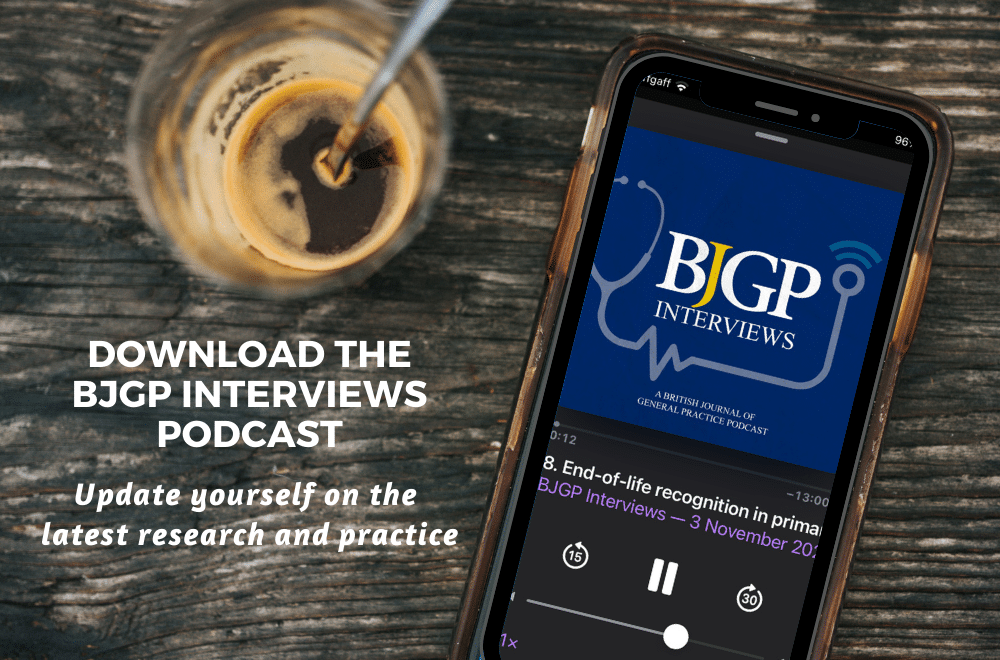Pain, Opioids and Syringe Drivers: A Practical Guide for the GP in the Wake of Gosport
This article is written by , and published as a companion piece to their editorial in the October 2018 issue of the BJGP.
The publication of the Jones Report investigating the excess mortality at Gosport Memorial Hospital is one in a series of end-of-life care issues that have hit the UK news. The underlying system failures are unfortunately far from new to the NHS; with the report echoing inter alia, the Kennedy Report and the Berwick Report, highlighting the need for system changes and support for whistle-blowers, as explored in the recent BJGP editorial by Pocock et al.(1)
Concerns around GP prescription of opioids may be particularly heightened due to Dr Barton’s professional background as a GP.
However, the ramifications of this particular scandal are also likely to affect public and patient perspectives on opioids and use of syringe drivers, particularly at the end-of-life, as we discuss in a linked BJGP editorial. Anecdotally, health professionals are already reporting questions arising in the wake of the recent coverage. For example, a relative on an elderly care ward recently questioned opioid prescribing, asking ‘Aren’t those the drugs that kill people, from the news?’, and when emphasising the need to move to comfort care ‘But how do you know that those painkillers are what they need: they aren’t talking?’ Through some careful communication and use of terminology, and offering a second opinion, it was possible to reassure these relatives and build their trust, but this has already demonstrated how clinicians could be finding themselves in sticky situations in the wake of Gosport.
Concerns around GP prescription of opioids may be particularly heightened due to Dr Barton’s professional background as a GP, so it is important that GPs are equipped to answer questions in a clear and honest way. Here we list some possible questions with responses framed in patient-friendly language, which we hope will help to provide some practical tips for GPs faced with these concerns.
1) What are opioids and are there any alternatives?
- Opioids are chemicals which reduce the sensation of pain.
- They are present naturally in the body whether or not we are experiencing pain.
- The main prescribed strong opioids are morphine and diamorphine, which originate from the poppy plant.
- The body changes diamorphine into morphine and then changes morphine into an active form that works to control pain.
- There are synthetic versions of morphine, such as oxycodone and fentanyl, which act in slightly different ways, but are all strong opioids.
- Codeine, dihydrocodeine and tramadol are known as weak opioids: they are mostly converted into morphine or related compounds in the body.
- Most causes of pain will respond to morphine and related strong opioids.
- There are not any effective alternatives to opioids for severe pain in most situations.
- There are other medications which work on other types of pain, such as nerve pain.
- Opioids are also sometimes used in low doses to treat breathlessness.
2) Are opioids effective for other symptoms such as agitation?
- In short, no!
- Symptoms other than pain and breathlessness in advanced disease and at the end of life are not effectively treated with opioids.
- We always try to control symptoms with non-drug measures where possible, but when drugs are needed:
- anxiety responds best to drugs such as midazolam.
- confusion respond best to drugs such as haloperidol or levomepromazine.
- If there is suspicion that agitation is being caused by undiagnosed pain, then a trial of a one-off opioid dose may be appropriate.
- However if opioids are being used in the absence of pain or breathlessness, this should be questioned.
3) Do opioids hasten death, prevent recovery or cause addiction?
- Research has clearly shown that when opioids are used in appropriate doses to control pain, they do not decrease survival. (2)
- When used in the pain control setting, patients do not get a “high” when using opioids, as occurs when they are used in substance abuse.
- Research has also shown that when used correctly, should the pain subsequently ease then the opioid dose can be gradually reduced or stopped, meaning that they do not cause addiction or prevent recovery. (2)
- If used in the absence of pain, or in excessive doses that are not in proportion to the level of pain, opioids may shorten life. This is what happened in Gosport.
4) What are the side-effects of opioids and how can I know if too much opioid has been given?
- Side-effects are unwanted effects of a drug and do not indicate that an excessive dose has been given. Three common opioid side-effects are:
- Constipation: most patients need a laxative.
- Feeling / being sick: this occurs in about a third of patients, often settles within a few days and is usually well controlled by haloperidol.
- Mental clouding: some people feel that they “cannot think straight” for a few days after starting opioids, but this usually settles within three days. If it does not settle, it is common to switch to the alternative opioid oxycodone and / or ask for specialist advice.
- Toxicity occurs when someone is given too much opioid.
- Pointers to “opioid toxicity” include: muscle twitching, confusion, hallucinations, drowsiness, pinpoint pupils and reduced rate of breathing.
- It is the reduced breathing that increases the risk of death in major overdose.
- When someone has evidence of toxicity, the dose of opioid must be reduced even if they are still in pain and alternative ways of controlling the pain must be found. Advice from a palliative care specialist is commonly needed.
5) Aren’t syringe drivers dangerous?
- The NHS now only uses modern syringe drivers, not the Graseby ones that were used at Gosport and later withdrawn for safety reasons.
- A syringe driver gradually empties the contents of a syringe into the patient over 24 hours, given into the tissues under the skin, not into a vein.
- They are particularly useful when a patient is no longer able to take medicines by mouth: they avoid the need for painful repeated injections and ensure a steady level of medication in the body.
- The drugs prescribed for syringe driver need to be carefully chosen to be the right ones, in the right dose for the symptom(s) that the patient is experiencing, as already described.
- In Gosport, excessive doses of opioids, usually diamorphine, were given to patients via syringe drivers who often had little or no pain. This was unacceptable practice and shortened the lives of many patients.
6) How do you know if someone is in pain if they aren’t conscious?
- At this stage of illness, pain can be flagged by distressed facial expressions, clutching of a part of the body, groaning, distress on being moved or examined and agitation.
- This needs skilled assessment by doctors and nurses. These flags can indicate pain, but may also indicate other problems such as a full bladder needing a catheter or agitation not due to pain.
- It is helpful for family members to look out for these things and tell the doctors and nurses that they are happening.
References:
- Pocock L, Forbes K, Reid C, Purdy S. Now Gosport: what next? Br J Gen Pract. 2018 Jul;68 (675): 460-461
- Sykes N, Thorns A. The use of opioids and sedatives at the end of life. Lancet Oncol [Internet]. 2003 May 1;4(5):312–8. Available from: https://doi.org/10.1016/S1470-2045(03)01079-9
Featured photo by Aarón Blanco Tejedor on Unsplash





5